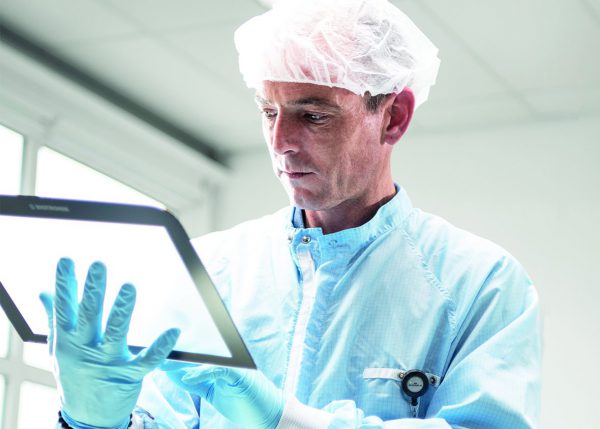Touchscreens from SCHURTER meet the most diverse requirements for use in a wide range of applications. Our customers demand the fulfillment of specifications from the industrial, medical, aerospace or automotive sectors. These concern, among others, the operation and reliability of PCAP touchscreens under harsh environmental conditions, extreme operating temperatures and high EMC requirements.
“Off the shelf” PCAP touchscreens are usually not able to meet these requirements without problems. SCHURTER provides the customer with qualified touch solutions that are optimized for the use in medical and industrial applications. In addition to the already qualified standard PCAP touch solutions, the sensor design, firmware and system integration is individually adapted to the respective requirements of the applications.
Benefit from our added value solutions
At SCHURTER our capacitive (PCAP) touchscreens, the sensor designs and firmware, are individually developed to meet your requirements. We have highlighted 6 beneficial features of our PCAP touchscreens:
1) Advanced readability
To develop a low-reflection touchscreen design, a glass-based PCAP sensor is bonded behind the front glass with an anti-reflective coating. In addition, a polarising film is also integrated into the structure. Using an optical bonding process, a light reflection rate of 1-1.5% is achieved. This construction reduces the reflection of light, which ensures the display is readable even under strong sunlight.
2) Outdoor UV protection
Touchscreens in outdoor areas are permanently exposed to direct sunlight. A long-term exposure to ultraviolet light can damage touchscreen materials. UV light causes a colour change in the printed graphics and a yellowing of the polyester film. Over an extended period, this will also lead to a colour change of the adhesive layers in the structure.
For outdoor applications SCHURTER uses special materials for the PCAP sensors with specific anti-UV properties. Sunlight with a wavelength of <= 400 nm is blocked. The performance criteria of the ASTM G154 standard are fulfilled.
3) Extreme operating temperatures
When exposed to extreme cold, the display may drop below its normal operating temperature. For these application areas, a transparent heating element is laminated onto the back of the touchscreen. This system heats the touchscreen and ensures the operability of the display. In addition, the heating element also dehumidifies the touchscreen surface.
When heated by sunlight in outdoor areas or in automotive applications, working temperatures of over 80°C can occur. In these cases, SCHURTER utilises special PCAP controllers with a temperature range from -40°C to 85°C.
4) Electromagnetic compatibility (EMC)
A major requirement for industrial touchscreens is EMC conformity. Electromagnetic sources of interference in the environment must not affect the correct functioning of the application during operation. For medical applications 28V/m are specified. For automotive and railway applications 60 or 100V/m are specified. With optimized AD converters in the evaluation electronics of the PCAP controllers, increased signal voltages due to charge pumps, special algorithms such as the frequency-hopping method as well as hardware and software filters, interference signals are comprehensively suppressed. A high signal-to-noise difference is also achieved with a sensor design specially adapted to the electronics.
5) Electromagnetic Interference (EMI)
Medical, aerospace and defense applications require high resistance to electromagnetic energy (EMI). PCAP touchscreens can be laminated with a mesh film connected to a conductive housing. A surface resistance of less than 1 Ω/◻ ensures high performance shielding. This design will meet the RF emission requirements of the DO-160G Airborne Electronics standard. PCAP touchscreens with EMI shielding are frequently used in aviation, medical, instrumentation and other special applications.
6) High impact resistance
For applications in explosion-proof areas, such as mining, the front glass of the touchscreen must meet extreme requirements with regards to breakage and impact resistance. In addition, these environments frequently require the use of thick gloves. For these conditions, the design of the sensor structure is modified, and the firmware is adapted. This means glass thicknesses of up to 10 mm can be achieved that can be easily operated with thick gloves.















